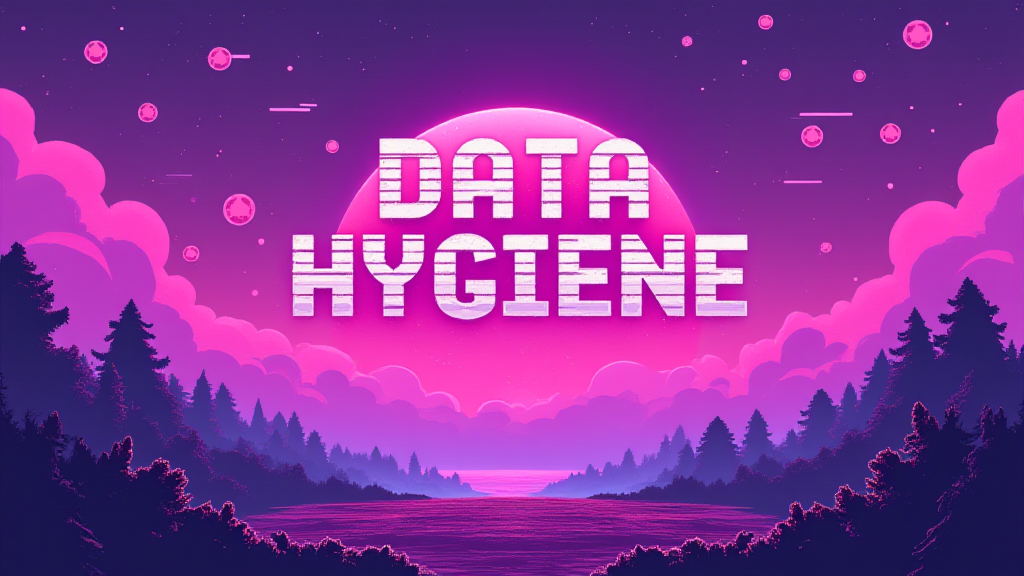Data Hygiene: Ensuring Clean, Accurate Information

Published on: October 01, 2024
In the world of Sales, Marketing, and Revenue Operations, maintaining clean and accurate data is crucial for success. Data hygiene refers to the process of identifying, correcting, and preventing inaccuracies in data sets to ensure high-quality information for decision-making and operational efficiency. 🧼📊
Why is Data Hygiene Important?
Clean data is the foundation of effective business operations. Here's why data hygiene matters:
- Improved Decision-Making: Accurate data leads to better insights and more informed decisions.
- Enhanced Customer Experience: Clean data ensures proper communication and personalization.
- Increased Productivity: Less time spent correcting errors means more time for strategic tasks.
- Cost Savings: Reducing duplicate or inaccurate data can lower operational costs.
- Compliance: Proper data hygiene helps maintain regulatory compliance.
Key Components of Data Hygiene
Effective data hygiene involves several crucial steps:
- Data Cleansing: Identifying and correcting errors in existing data.
- Data Deduplication: Removing duplicate records to prevent redundancy.
- Data Validation: Ensuring data meets specific criteria and formats.
- Data Enrichment: Adding missing information to enhance data completeness.
- Data Standardization: Applying consistent formats across all data entries.
Data Hygiene Best Practices
To maintain clean data, consider implementing these best practices:
- Regularly audit your data to identify inconsistencies and errors.
- Implement data validation rules at the point of entry.
- Train team members on proper data entry techniques.
- Use data hygiene tools and software to automate cleaning processes.
- Establish a data governance framework to maintain data quality over time.
Data Hygiene Tools and Software
Several tools can help streamline your data hygiene processes:
| Tool Type | Examples | Key Features |
|---|---|---|
| CRM-specific | Salesforce Data Quality, HubSpot Data Quality Command Center | Duplicate management, data enrichment |
| Standalone | Informatica, Talend, OpenRefine | Data cleansing, standardization, matching |
| AI-powered | IBM Watson Knowledge Catalog, Trifacta | Automated data profiling, anomaly detection |
Common Data Hygiene Challenges
While maintaining data hygiene is crucial, it comes with its own set of challenges:
- Data Volume: Large datasets can be overwhelming to clean and maintain.
- Data Silos: Information spread across multiple systems can lead to inconsistencies.
- Human Error: Manual data entry is prone to mistakes and inconsistencies.
- Changing Data: Customer information and market data change rapidly, requiring constant updates.
- Resource Allocation: Dedicating time and personnel to data hygiene can be challenging for some organizations.
Measuring Data Hygiene Success
To gauge the effectiveness of your data hygiene efforts, consider tracking these key performance indicators (KPIs):
- Data accuracy rate
- Duplicate record percentage
- Data completeness score
- Time saved in data-related tasks
- Reduction in customer complaints due to data errors
By focusing on these metrics, you can quantify the impact of your data hygiene initiatives and justify continued investment in data quality.
Implementing Data Hygiene in Your Organization
To successfully implement data hygiene practices in your Sales or Marketing stack, ask yourself these questions:
- What are our current data quality pain points?
- How can we integrate data hygiene processes into our existing workflows?
- Which data hygiene tools would best suit our organization's needs?
- How can we create a culture of data quality awareness among our team members?
- What training or resources do we need to provide to ensure effective data hygiene practices?
By addressing these questions, you'll be well on your way to implementing a robust data hygiene strategy that supports your Sales, Marketing, and Revenue Operations goals. 🚀📈
For more insights, check out our customer insights and learn about the customer health score.
















